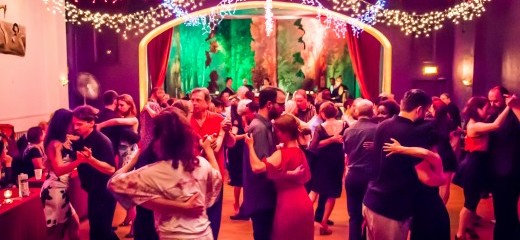
Photo: Helio Ha
Tango Reunion
by Carolyn Merritt
There´s something unique about the Philadelphia tango scene that is hard to describe. Kindness, generosity, joy: these things bring the best and inspired us. Thank you, all!
-Guillermo Cerneaz
(*Note: Real names are used with the exception of speakers who wished to be identified with a pseudonym)
Five years after its first incarnation and four festivals later, Memorial Day weekend has become tango weekend in Philadelphia. During this four day period, aficionados and beginners alike can dance morning, noon and night, study with world-class guest teachers, see outstanding performances, catch up with tango friends from around the world and make new connections with visiting dancers. Like others in the Philadelphia community, I eagerly anticipate the festival, but this year was different; I gave birth to a beautiful baby boy this winter, and have been consumed with love and motherhood since. If each year is a reunion, this one was especially so for me, as I’ve had little time or energy for the late-night world of tango since the last months of my 35+ pound pregnancy. A coming out of sorts for my son, who accompanied me to classes each afternoon, the festival was a marathon-like trial of endurance for me, attending four consecutive milongas (social dances) and still waking up with the baby each morning. (I think I’m still recovering.) I set out as a “native anthropologist,” with phone in hand to record brief interviews each night. But since I hadn’t been tangoing in months, I found it hard to keep from socializing and dancing myself. So I also solicited feedback from a handful of friends via email and Facebook and wove all these reflections together into the account “from the inside” below.
Festivals, Addiction and Authenticity
When you go to a festival and take 10 classes, it’s not like you’re taking maximum value out of each class. But I consider it like improv theatre. It’s like participatory performance. For me, a class isn’t just what you learn, it’s the experience of getting to know the teachers, their style, their approach. What happens in the class is simply a context for doing that. It’s like having a conversation with them. Maybe it’s artificial because they’re required to go thru a, b, c, d for their students, but I still find it really intriguing, and that’s why I do it. It’s not sane to say, “Okay, I’m going to learn 10 classes worth of material in three days.” There’s nothing sane about that, but in terms of a life experience, I think they’re amazing conversations.
-Peter Kress
The most ambitious to date, this year’s festival featured 23 intermediate/ advanced classes, a four-day absolute beginner track, nightly milongas from 9:30 p.m. – 2 a.m., a late night milonga from 2 a.m. – 6 a.m. on Saturday and two early evening prácticas (practice events). Hosted by the Philadelphia Argentine Tango School (PATS) and housed concurrently at their studio and the Ruba Club, the Philadelphia event, like all tango festivals, offers dancers the chance to maximize their tango experience through immersion. Designed to mimic the intensity of tango in its birthplace — where one can dance all day and night year-round — this immersive environment is a fleeting dose of authenticity, an injection of sorts in between pilgrimages to Buenos Aires (requisite for true aficionados). As Ekaterina noted (below), festivals provide a framework that caters to tango addiction, allowing us to be consumed by the dance, if only for a long weekend. And this experience is not unlike that lived by the countless tourists and expats who regularly travel to Argentina to live their tango dreams:
One word comes to mind when I reflect on the festival — “longing.” That wrenching feeling in your heart and feet that makes you crave tango more than you do in your everyday life, with sleepless nights, the excitement of meeting old and new friends, spending hours together in an exciting atmosphere of tango and then coming home to crash into deep sleep. I still feel I can go back to the dance floor right now and start it over again. At one point during the Salon Canning milonga, I actually felt like I was back in Buenos Aires on the first day of my trip, knowing the excitement has just started. I am truly grateful to Meredith [Klein, Executive Director, PATS] for bringing a piece of Argentina so close to home!
-Ekaterina Pukhovich
The crowded floor of the Ruba Club was a topic of conversation all weekend. If this heightens the feeling of authenticity — mimicking the tight spaces of many milongas in Buenos Aires — it also provides fodder for reflecting on the intricacies of such an intimate partner dance:
The Friday night milonga was high in energy and anticipation. The space was very crammed, and I sensed tension and anxiety on the floor. Tango accidents can be so serious and fussy, and I thought about how contrary it is to other social dances, where people generally smile, shrug and keep bopping along. I like observing the (mostly male) leaders’ reactions. How is he going to handle the situation? Graceful, agitated, apologetic, protective, aggressive, cool, dismissive, oblivious? It’s very much like being on a date with someone you haven’t known very long. It’s a test of his character and a chance to see how he treats others under pressure. New or inept leaders will keep me on full alert to avoid getting my toes stepped on or my heels digging into the legs of other dancers. With experienced and capable leaders, I tend to close my eyes more often, relax and navigate the floor in partnership even when minor bumps happen along the way. The level of trust you have to build in a mere 10 minutes is crazy! And it really mirrors personal relationships...
-Shinjoo Cho
Moreover, an intimate venue can boost the overall camaraderie of a tango festival, not an easy task at such a large event, as PATS instructor Amy He noted:
Many people talked about how crowded it was and how despite that, the RUBA Club still felt like the perfect venue. It's too often that you go to a big festival and they've rented out a huge ballroom that encourages people to separate and settle into their own corners. You can arrive and feel instantly isolated. The studio and the RUBA Club are intimate and conducive to conversation and interaction — you can't stand that close to someone and not at least say hello. Setting the mood and atmosphere is one of the hardest things we have to do during the festival, and I think we do a pretty decent job of it.
While nearly everyone I spoke with lauded the music and sang the djs’ praises, more than one lamented the lack of live music, another component that heightens the sense of authenticity by placing the music and dance on equal footing:
Listening to the well curated music renewed my appreciation for how a dj can really keep the high going. ... I also lamented the lack of live music. Smaller, younger festivals definitely struggle to make financial sense, but I think there needs to be a shift in priorities to seek a balance between dance and music. ... In my opinion, the thrill of live, unfiltered music enhances the dancing experience and makes the tango whole.
-Shinjoo Cho
And for many, the late night milonga is the apex of the weekend, the closest one can get to the alter-world that is tango in Buenos Aires, where tangueros head out to dance just as the city’s denizens, already famously nocturnal, are heading to sleep:
I stayed until 5:30 a.m. When I got to the studio today at 2 p.m., it was darker than when I left this morning. Dancing until sunlight starts popping up in the skylights here is my favorite part about the festival.
-Matt Hall
Master Classes
This year’s festival had one of the strongest lineups of guest teachers I’ve seen at any festival. They’re world class in my opinion.
-Peter Kress
In a conversation with Meredith Klein, she emphasized the pedagogical component of the festival and the strengths of this year’s guest teachers — Silvina Valz (Argentina) and Andres Amarilla (Argentina/U.S.), Kara Wenham (U.S.) and Javier Antar (Argentina), Marina Kenny and Guillermo Cerneaz (Argentina), and Ciko Tanik (Turkey/U.S.) and Adam Hoopengardner (U.S.):
They're all outstanding dancers and performers. That alone would be a reason to invite a couple to teach and perform at the festival. But I specifically chose this group of dancers because they are all gifted and committed teachers. Each of them has taught at the Philadelphia Argentine Tango School before, and they have all demonstrated a unique ability to connect with and invest in their students and to leave them with a deeper understanding of how tango works and what it is about. At a festival, it's easy to get swept away with all of the dancing, socializing and connecting with old and new friends. But I want our festival to be a place where the learning component is equally strong, where dancers get the information and inspiration they need to improve and renew their dancing, so that they feel energized to keep dancing and improving over the next year.
Having studied with all the guest teachers, I wholeheartedly agree with Klein’s statement, however this year was the first time I observed Tanik and Hoopengardner’s beginner intensive. The only couple who have taught at all four festivals, Hoopengardner and Tanik are especially beloved by students for their enthusiasm, charisma and tireless tango organizing in NYC. After only four lessons under their expert guidance, these tango neopyhytes were not only dancing, but grappling with difficult concepts like “passive resistance” in following, and fearlessly braving the “salon,” a small, boxed off area designed to mimic the tight floors of crowded milongas.
In a conversation with the event’s headliner Silvina Valz, she spoke of festivals as reunions — meeting points among professionals as well between teachers and students — and highlighted the intensive nature of her workshops, specifically designed to maximize students’ learning:
I haven’t spent much of my career teaching weekly classes. I prefer teaching private classes, seminars, workshops — deep, intensive things. So, I used to wonder about this pedagogic responsibility, because my students can’t work on a regular basis with me. But at one point I realized that, yes, I work on a regular basis with people who like to work with me; instead of every week, it might be every three months or once a year, but we see progression, so we work deeply.
On the other hand, many social dancers admitted that their festival participation has evolved over the years. As they’ve gained “mileage” or experience on the dance floor, they may consume fewer classes and conserve their energy for dancing:
I liked just attending the milongas and not doing a day full of classes the same day because I felt more energy for social dancing. I also noticed that my festival experience changes with the more experience I have as a dancer and the more people I know. The more comfortable I feel as a dancer, the better time I have socially and on the floor.
-Stella
And whether we attend classes all day or conserve our energy for the milongas, the mastery on display in the teachers’ performances is simply another form of tango lesson. Each time I see Javier Antar and Kara Wenham perform, I think they can’t possibly improve because it’s that outstanding, and then they do. While I gasped aloud during their performance, each exhibition was a showcase for these dancers, so clearly in their prime and enjoying it:
Whenever I need inspiration, I go to my computer and watch videos of Kara [Wenham] and Javier [Antar], and it always inspires me. There’s something about their consciousness, their awareness, their attention to what they’re doing. Their intelligence combined with their bodies... it’s like watching a great musician who’s so connected intellectually with what they’re playing. Watching all the performers here at the festival is like that. There’s this feeling of trust, that they all know what they’re doing. Everybody’s qualified. Nobody falters. I never worry that they’re going to make a false step. They’re always doing what they want to be doing. It’s masterful, really. We’re so lucky to be able to see this, and it’s astonishing that they’re able to achieve it.
-Jerry Klein
Tango Family
Was I surprised by anything? Yeah, by a lot of things [...] the most surprising thing is there is a real community, and it’s really tight-knit.
-Beti
It’s such a multicultural, multinational, multilocational phenomenon, that you have connection with people from all over the world in all kinds of contexts... These were communities of people that we just didn’t have an opportunity to interact with, and tango surprised us with its diversity and eclectic-ness.
-Peter Kress
Many volunteers offered their service — not for the free passes they received, but because they want to do what they can to bring this great event to the community.
-Matthew McLaughlin
When I reflect on my tango network, I realize that tango has made my world infinitely larger while making this huge world smaller and closer at once. My family was made in tango; I met the father of my son at Jerry Klein’s South Street práctica in 2009. Before and since our son’s arrival, we have been showered with blessings, gifts and good will, from all corners of our lives. But I am honestly bowled over by the elation his birth elicited from tango friends and acquaintances, in Philadelphia and around the world. I don’t think I realized how family-like these connections are. The strength of these ties makes the festival possible, and it is a topic that arose in many of my conversations with social dancers and professionals alike.
One of the many highlights of the weekend was watching Lesley Mitchell and Kelly Ray, my first teachers, perform on Sunday evening. Among the earliest tango dancers in Philly, Lesley and Kelly have been teaching and organizing for over 20 years, and are doubtless the most responsible for the community’s existence today. It was at their weekly milonga that I fell for tango, and it was with Lesley that I first traveled to Buenos Aires, the city I eventually lived in for two years. Locals who rarely frequent festivals came out solely to cheer them on. It was moving to witness the crowd’s thunderous applause before they even began to dance, and to see the heartfelt reception of their playful, joyous milonga (not only a social event, also one of three varieties of tango music and dance). Indeed, the crowd wanted more than just one dance from them.
This warm reception greeted all of the guest teachers as well, each of whom has visited Philadelphia before. As Jerry Klein so eloquently put it, the connections forged through classroom experiences, sharing the social dance floor and socializing within and around tango heighten our appreciation of our teachers’ performances:
It’s easy to watch these performers and be happy because I care about them [...] I feel a little bit of a bond with each one of them as they’re dancing. And probably a lot of people here feel that because they’ve taken classes with them.
And this sense of connection is reciprocal, expressed by the teachers for their students, a reflection of the community built through tireless organization:
When you walk out to dance you can feel the people, their mood. And sometimes if you're lucky, they are really with you in the truest sense, with an air of excitement that is palpable. That cultivation of the love of this dance takes time and dedication...and I'm sure it has a lot to do with Meredith [Klein].
-Kara Wenham (U.S., tango professional)
If Klein is the spearhead of this wonderful event, it simply wouldn’t exist without the collaboration of the city’s other tango professionals — like Marc Hussner, dj Sunday evening and co-host, with Kristina McFadden, of the late night milonga, and Lesley Mitchell and Kelly Ray, who rescheduled their weekly milonga to precede the festival on Thursday. Also indispensable are the countless staff and volunteers, like Leslie Gaines, one of many local dancers to open her home during the festival:
I have Javier and Kara and Patricie [Javier’s partner], and I also have Julie from England, Francisco from DC and Sophie from San Francisco (and my two brothers who came to watch the performances last night while they’re in town for their high school reunion). There’s some very nice benefits to having all these people with me: we’re sharing some very nice cooking experiences, hanging out together in the kitchen. This is my fourth festival, and I’ve had guests every year. The most I’ve had ever is nine.
Next year’s festival promises to be the largest and most exciting yet, headlined by tango pioneer Gustavo Naveira and his wife and partner, Giselle Anne. After only three years at the RUBA Club, the festival has outgrown the venue. Ojalá (God willing) that the new site will maintain the intimacy and the air of porteño (of the port city of Buenos Aires) magic danced to life at this Northern Liberties social club.
By Carolyn Merritt
June 25, 2014


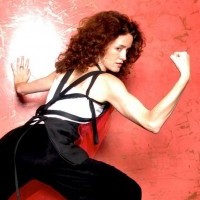
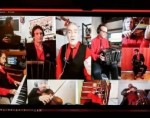
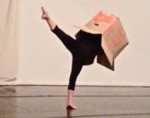
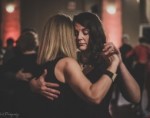
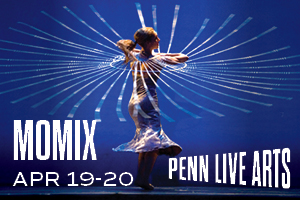
.png)


